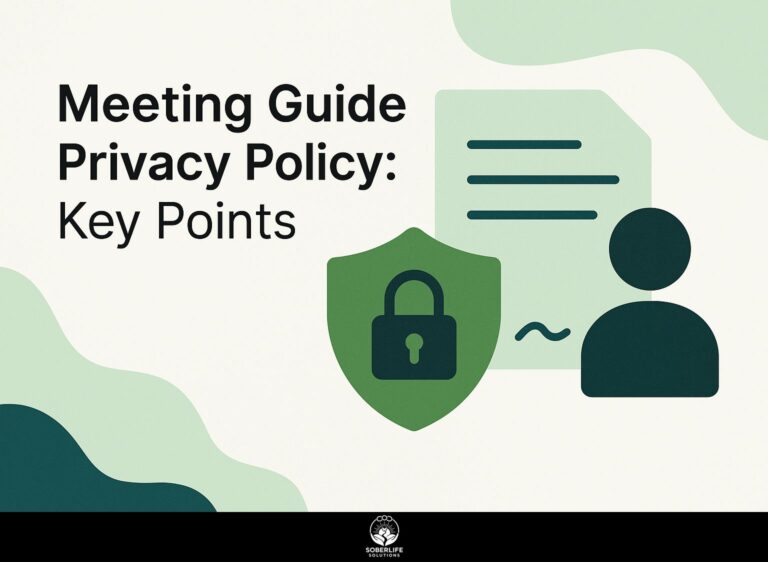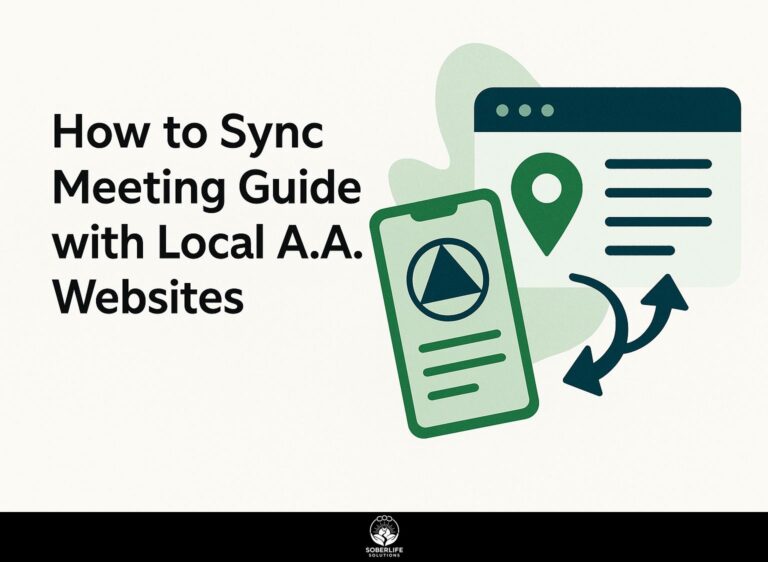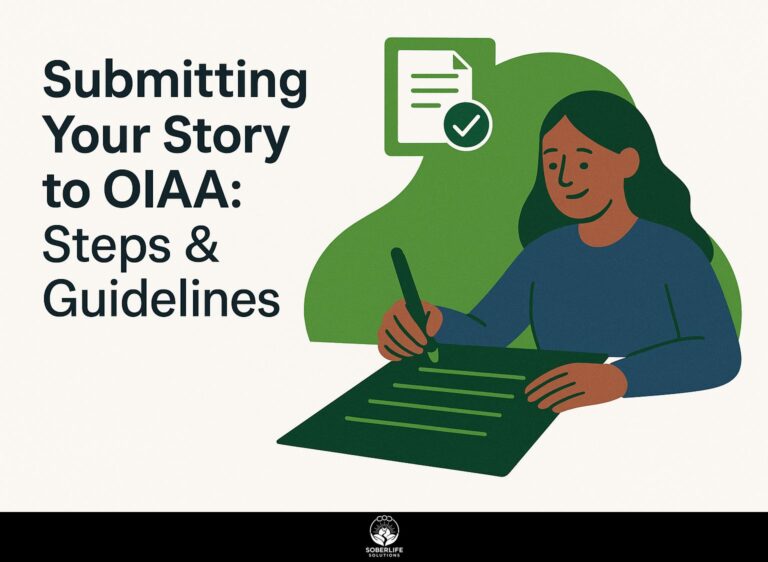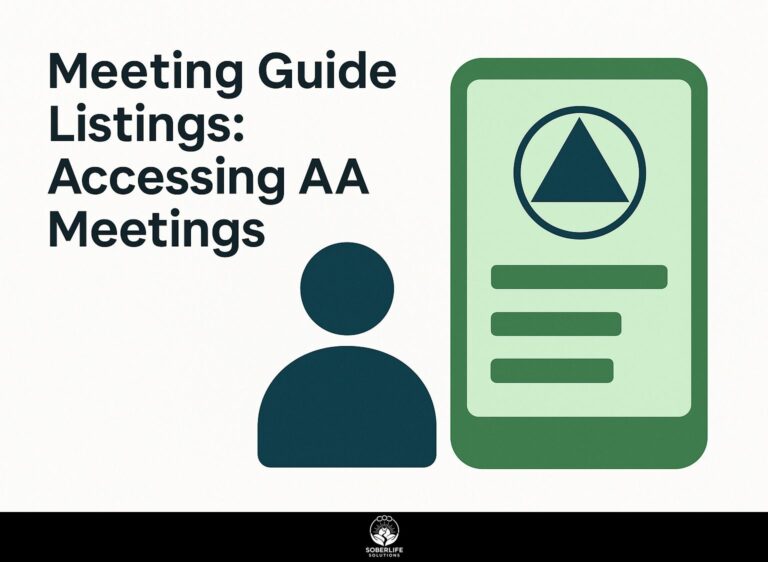Virtual Hand Raising in AA Meetings: Etiquette
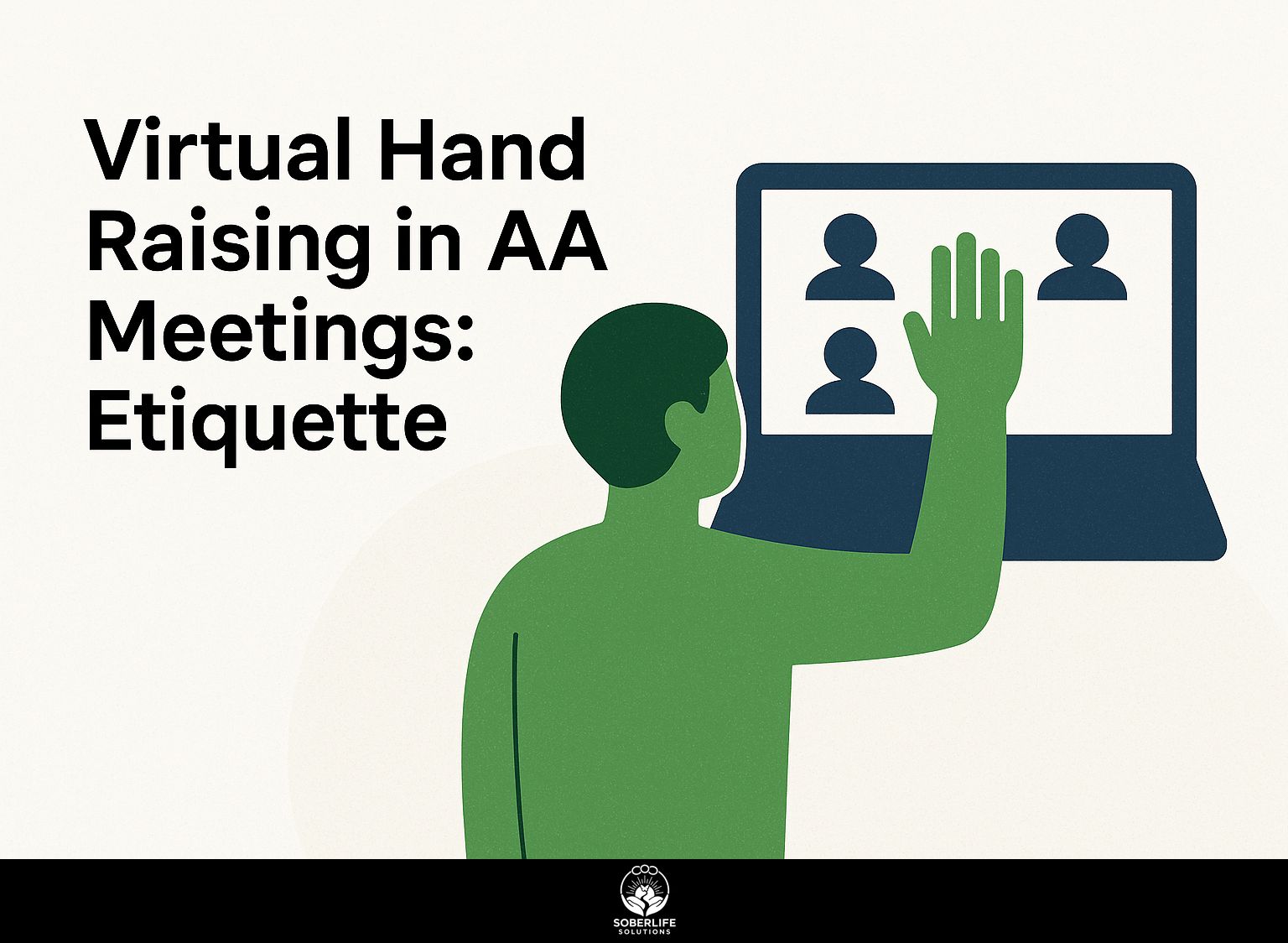
Knowing how to behave in online meetings is essential for clear communication in AA gatherings. Whether you’re joining the Austin Texas Young People’s group on Zoom or participating in a larger meeting, knowing how to use the virtual hand feature can make all the difference. This article will guide you through the essential etiquette of raising your hand virtually, including how to mute your microphone and respond when the chairperson calls on you, ensuring a respectful and engaging experience for all participants.
Key Takeaways:
Importance in AA Meetings
In AA meetings, the virtual hand feature promotes a respectful environment, allowing participants to express themselves without interruptions.
This tool is useful in big groups where many people might talk over each other. When people click to raise their virtual hands, it means they want to speak, allowing everyone a chance to talk.
This practice supports group conscience by allowing decisions to emerge from shared dialogue rather than dominant voices. People can share their thoughts without revealing their identity, which makes them feel more comfortable. This creates a setting where all individuals feel included.
The virtual hand function improves involvement and mutual respect during discussions.
Overview of Virtual Platforms
Popular platforms like Zoom and Microsoft Teams offer important features like virtual hand raising, cloud recording, and changeable backgrounds to improve user experience.
Zoom stands out with its virtual background option, allowing users to maintain privacy and professionalism during meetings.
Similarly, Microsoft Teams integrates well with Office 365, enabling seamless collaboration on documents during discussions.
Local and cloud recording options are important for later use, allowing participants to review what was discussed.
For those prioritizing community, platforms like Skype offer accessibility features and enable users to host large gatherings with ease. (Our insightful look at virtual recovery groups highlights the growing importance of these features.)
Checking these tools against particular meeting requirements and user ease can greatly improve the online experience. For those interested in a broader comparison of virtual meeting platforms, a comprehensive analysis by Slack provides insights into the top choices available.
Understanding the Etiquette
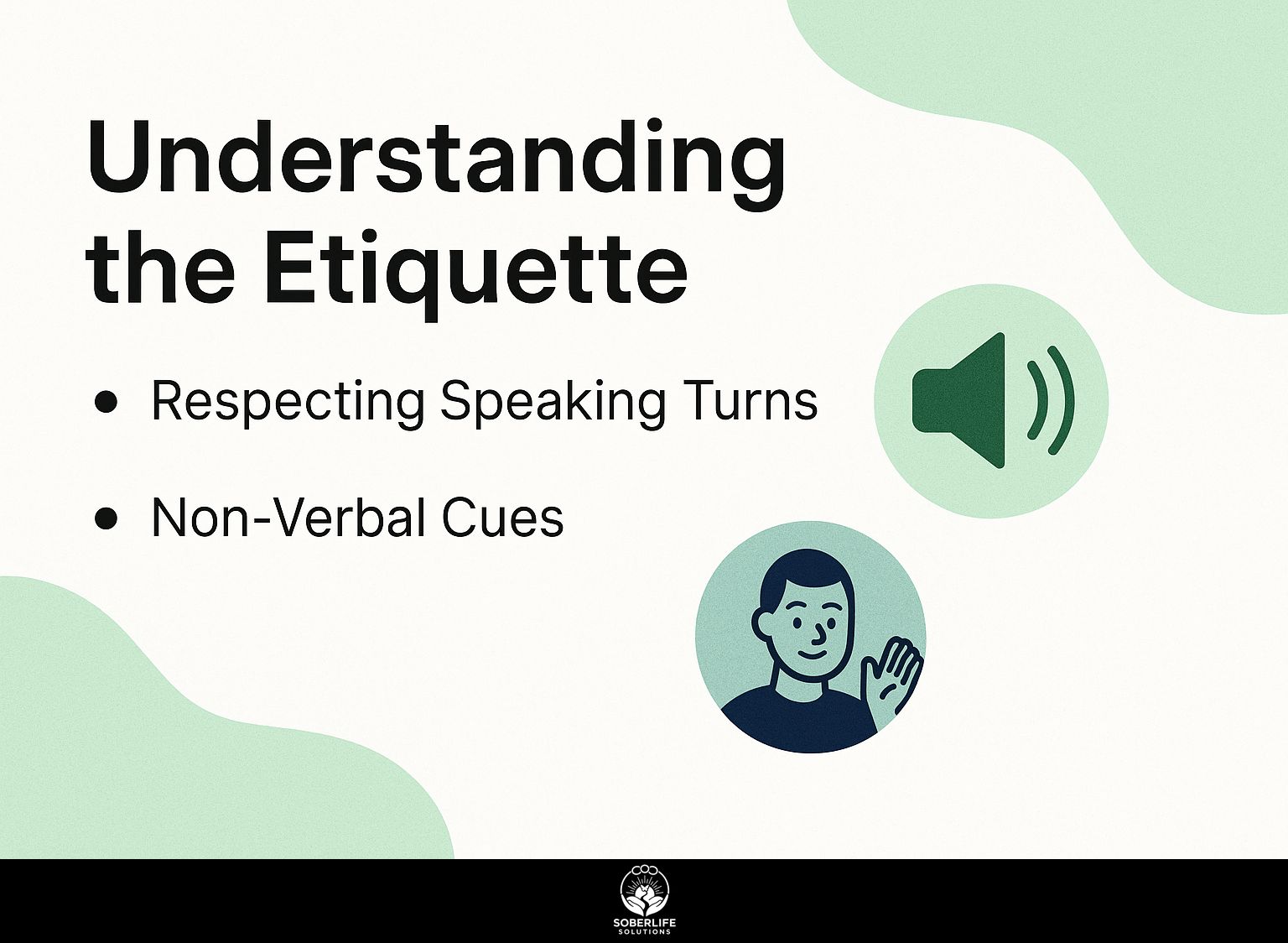
Following good manners in online meetings is important for building positive communication and respect among participants. One aspect to consider is ensuring the security of your virtual gatherings. This is particularly crucial in environments such as A.A. meetings, where privacy is paramount. For those interested in learning more, the guide on how to join and secure A.A. Zoom meetings offers valuable insights and practical steps to enhance meeting security.
Respecting Speaking Turns
It’s important to let each person speak in turn to keep online AA meetings organized, especially with the chairperson guiding the conversation.
To keep things running smoothly, participants should wait for the chairperson to call on them before they speak. This helps stop interruptions and encourages a respectful environment.
When using the virtual hand feature, raise your hand to indicate you wish to contribute, and wait for acknowledgment before unmuting. Paying attention when someone speaks is important. It shows you value their words and allows everyone to consider the conversation before sharing their thoughts.
By following these rules, participants can create a helpful and organized environment that makes the experience better for everyone.
Non-Verbal Cues
Non-verbal cues, such as nodding or thumbs-up gestures, play a significant role in conveying support during virtual meetings.
These cues can greatly improve communication, especially in large online meetings.
For instance, using Zoom’s reaction features can engage participants; a thumbs-up can show agreement without interrupting the speaker. Looking directly into the camera while talking helps make a connection, so keep your camera on and focus on the lens. Leaning slightly forward can indicate attentiveness and interest.
Minor adjustments can make your meetings run smoother, promote cooperation, and increase participation from everyone. For further insights into how non-verbal cues can enhance digital communication, Atlassian’s guide on nonverbal communication in the digital workplace explores these techniques more deeply.
How to Raise Your Hand Virtually
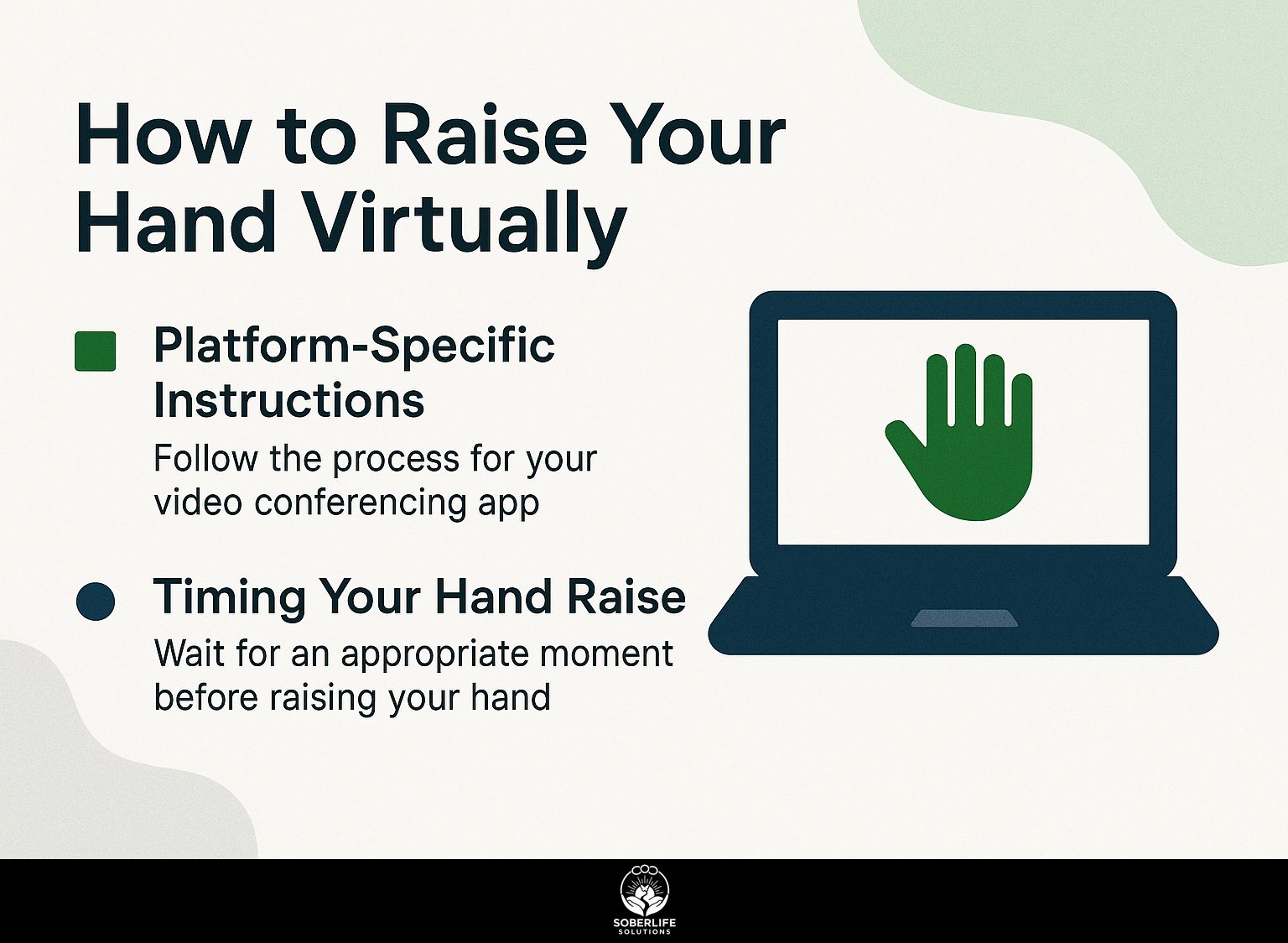
Knowing how to raise your hand online can help you take part more actively in virtual meetings.
Platform-Specific Instructions
To raise your hand in Zoom, simply click on ‘Reactions’ and select ‘Raise Hand,’ which allows the chairperson to see you wish to speak.
In Microsoft Teams, click on the ‘Raise Hand’ icon, located in the toolbar during a meeting. For Google Meet, tap the ‘More Actions’ button (three dots) and then select ‘Raise Hand.’ These actions alert the moderator effectively.
To make communication easier, learn how the platform works beforehand; watch tutorial videos on the official help page of each platform. Following these steps can help you feel more confident and involved in virtual meetings. For those interested in a comprehensive overview, this analysis by the National Science Foundation offers valuable tips for virtual meetings.
Timing Your Hand Raise
Choosing the right moment to speak is as important as how you express yourself because timing can influence how the meeting goes.
To effectively signal your input, wait for natural pauses or breaks in the discussion. For example, if a speaker concludes a point or takes a breath, that’s an ideal moment to raise your hand.
Pay attention to the agenda-if the topic shifts to a subject you’re interested in, don’t hesitate to raise your hand right away.
Indicating that you want to speak, like nodding or leaning forward slightly before raising your hand, can signal to others that you wish to talk without cutting off the current speaker.
Common Mistakes to Avoid

Steering clear of typical mistakes in online hand raising can result in more efficient and successful virtual meetings.
Interrupting Others
Interrupting someone while talking can cause confusion and result in mistakes within the group.
At an Alcoholics Anonymous (AA) meeting, you should wait for the chairperson to give you permission to speak. People can openly discuss their experiences and emotions.
For instance, if one member interrupts another while discussing their struggles with sobriety, it can derail the entire discussion, causing feelings of frustration or exclusion.
To promote respectful communication, participants should follow the “one person speaks at a time” rule to create a more supportive environment. This approach increases mutual respect and helps members connect more deeply with each other.
Overusing the Feature
While the virtual hand tool is helpful, overusing it might lead to confusion and delay the meeting.
To keep things running smoothly, ask participants to raise their hands only when they have important points to share. For instance, if a team member has a question about a project timeline, this warrants hand-raising.
Comments on minor points can be addressed in a chat or at a designated Q&A session. Consider establishing clear guidelines at the start of the meeting: limit hand-raises to significant contributions or urgent queries.
This method enhances communication and ensures that all shared information is helpful, which decreases unauthorized access.
Best Practices for Effective Communication
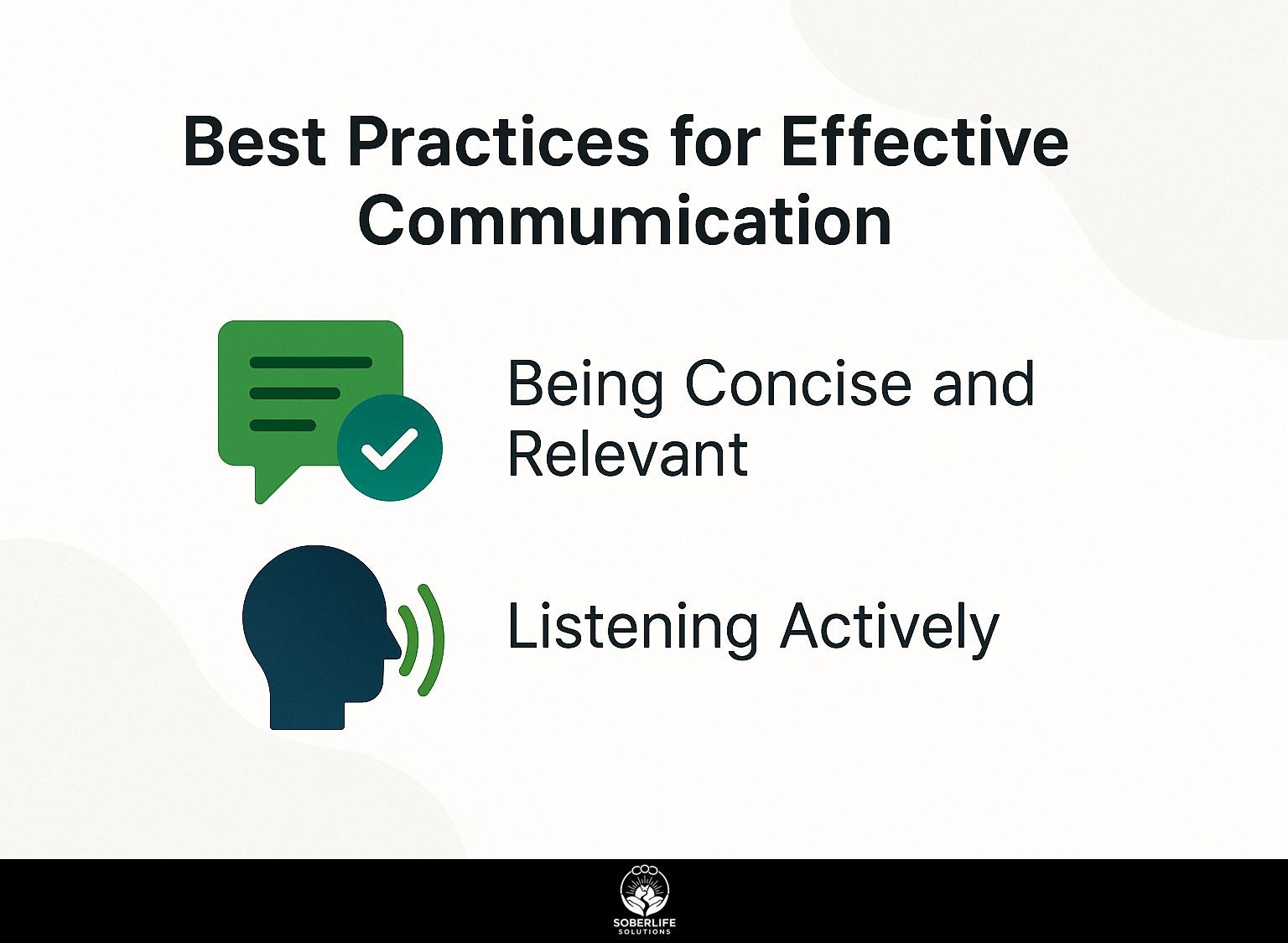
Using good communication techniques can improve the quality of discussions in online meetings. To truly enhance these digital interactions, understanding and utilizing virtual peer support platforms can offer additional benefits.
Being Concise and Relevant
Being concise helps keep people’s attention and makes your input meaningful in online meetings.
To make concise speaking points, start by identifying the main concept you want to communicate. Keep this message to one or two sentences.
Next, use
- bullet points
- to outline supporting ideas, limiting yourself to three key points. This helps structure your thoughts clearly.
Tools like Google Keep or Trello can help you visually arrange these points. Practice speaking for no more than three minutes to give time for discussion and keep focus on the subject.
Listening Actively
Listening carefully creates a cooperative environment and makes people feel comfortable sharing their ideas.
To improve your active listening skills, try techniques like repeating what the speaker said in your own words and asking questions that require more than a yes or no answer. For instance, after someone shares their thoughts, you might say, “So what I hear you saying is…” This shows you’re engaged.
Apps for notes like Evernote can help you write down important points while listening, so you don’t miss key details. Try to eliminate distractions-put away your phone or turn off notifications during conversations to give your full attention.
Frequently Asked Questions
How should I raise my hand in a virtual AA meeting?
In a virtual AA meeting, you can use the “raise hand” feature, or simply type “RA” or “raise hand” in the chat to indicate that you would like to speak. The meeting facilitator will then call on you.
What is the proper etiquette for raising my hand in a virtual AA meeting?
In a virtual AA meeting, you should wait for the facilitator to invite you to speak after you raise your hand. This guarantees everyone can join in and the meeting proceeds without issues.
Can I use the “raise hand” feature to share in a virtual AA meeting?
Yes, you can use the “raise hand” feature to indicate that you would like to share in a virtual AA meeting. This lets the organizer manage the speaking order and make sure everyone can join in.
Is it appropriate to raise my hand in a virtual AA meeting if I am new to the program?
Absolutely! Raising your hand in a virtual AA meeting is a great way to introduce yourself and get involved in the program. Don’t be afraid to share your story and ask for support from the group.
What should I do if I accidentally raise my hand in a virtual AA meeting?
If you accidentally raise your hand in a virtual AA meeting, you can simply type “cancel” in the chat to let the facilitator know that you no longer wish to speak. Be mindful of others’ schedules and let everyone have a chance to talk.
Are there any other ways to participate in a virtual AA meeting besides raising my hand?
Yes, there are other ways to participate in a virtual AA meeting besides raising your hand. You can also use the chat feature to share your thoughts and experiences, or simply listen and provide support to others in the meeting.

